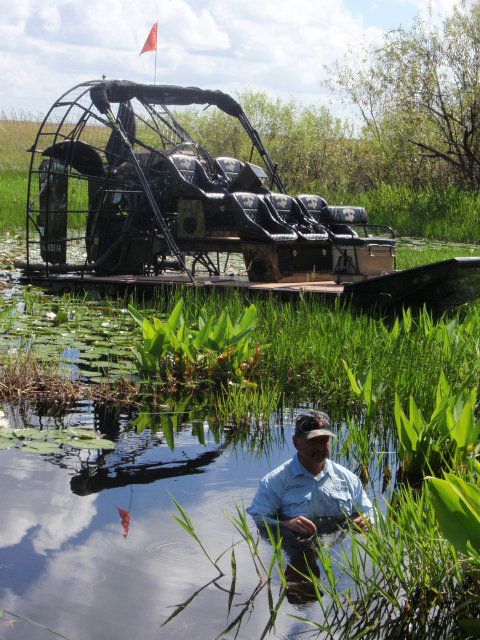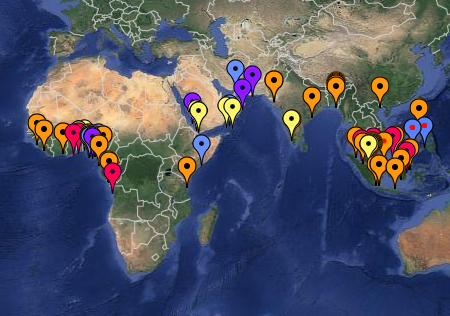concerns rise with the water
Posted on Sunday, 4 August 2013
By Susan Cocking
After above-normal rainfall in June and July, water levels in the Everglades are the highest on record for this time of year, with the historical peak of hurricane season still ahead.
That’s got Florida Fish and Wildlife Conservation commissioner Ron Bergeron of Weston extremely worried. Bergeron, the commission’s point man for Everglades restoration, has been tooling around the ’Glades on his airboat this past month, watching with growing alarm as the water rises around tree islands and levees, forcing the local denizens — deer, panther, marsh rabbit, bobcat, bear and even some wading birds — to cluster together on high ground. With nowhere to run, they can quickly run out of food and shelter.
If the waters keep rising for much longer, the commissioner fears, the region will see a repeat of what he calls the “massacre” of the mid-1990s, when months of high water wiped out 90 percent of the deer herd and other animals.
Bergeron is calling for emergency action by the U.S. Army Corps of Engineers, working with other federal and state agencies, to begin lowering water levels in the 700,000-acre conservation area between Alligator Alley and Tamiami Trail.

Florida Fish and Wildlife Conservation Commissioner Ron Bergeron stands chest deep in the Everglades near his camp where water levels would normally be up to his hips. His airboat is in the background.
“It’s natural in a 100-year act of God to have extreme high water,” Bergeron said. “The weak die and the strong survive. When you extend that event like in 1994, it becomes a manmade event, and that’s unnatural. I don’t want to wait till it’s too late.”
Bergeron proposes what he calls a “toolbox” to temporarily raise water levels in the L-29 canal that runs along Tamiami Trail and push that water south under the highway into Everglades National Park, and then to Florida Bay. That’s what state and federal agencies did — at Bergeron’s urging — in response to inundation from Tropical Storm Fay in 2008, and water levels dropped about a foot in a month.
“I’m not asking for something that hasn’t already been done,” Bergeron said. “We need to be proactive rather than reactive.”
But Lt. Col. Tom Greco, the Army Corps’ deputy district commander for South Florida, says not so fast.
Greco says the Corps is working with its partner agencies to find alternate means of moving water out of Water Conservation Area 3-A. But he said public safety is a concern with ongoing construction to raise and bridge Tamiami Trail and the possibility that increased flows could flood communities south of the Trail and east of Everglades National Park.
Greco said he hopes to have an analysis of alternatives completed in the next few days.
“It’s a tricky system down there, a tremendous amount of water,” he said in a telephone interview from his Jacksonville office. “We don’t have all the data and information to make a change right now. We’re going through the data to see what kind of flexibility there is. We’ve got to look at other components of the system so it doesn’t have adverse impacts somewhere else.”
Bergeron hopes the Corps doesn’t take too long to get on board. While managers discuss ways of accomplishing the multibillion-dollar restoration of natural water flows through the Everglades over the next 30 years, he said, they need to keep the region’s wildlife and ecology at the forefront.
“I’m looking for government to deviate from normal operations in extreme high water events to accommodate the wildlife while we accomplish the largest environmental restoration in the history of the world,” Bergeron said. “If we don’t work together, the [Everglades] could die before we get to the 30-year restoration.”


